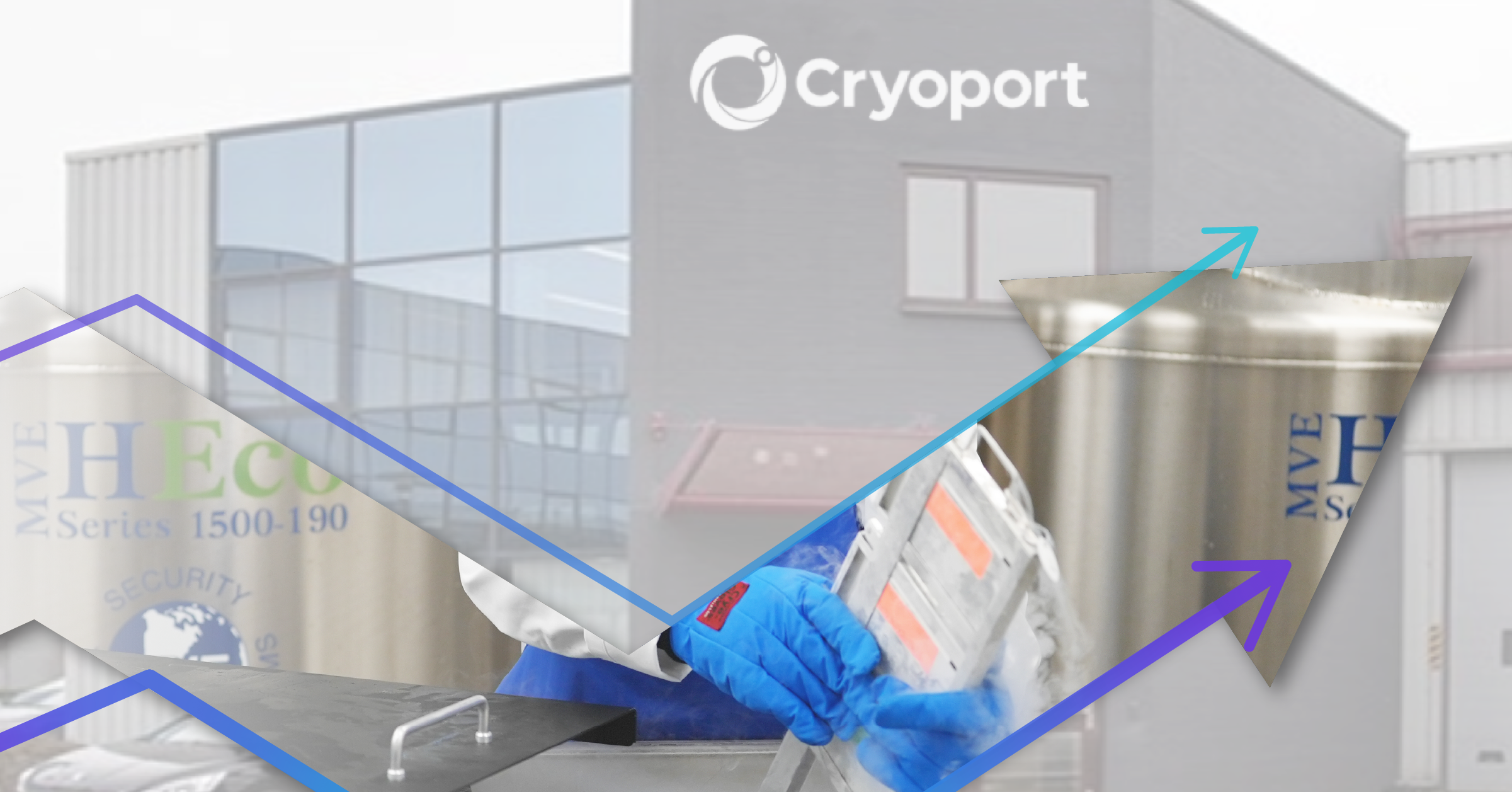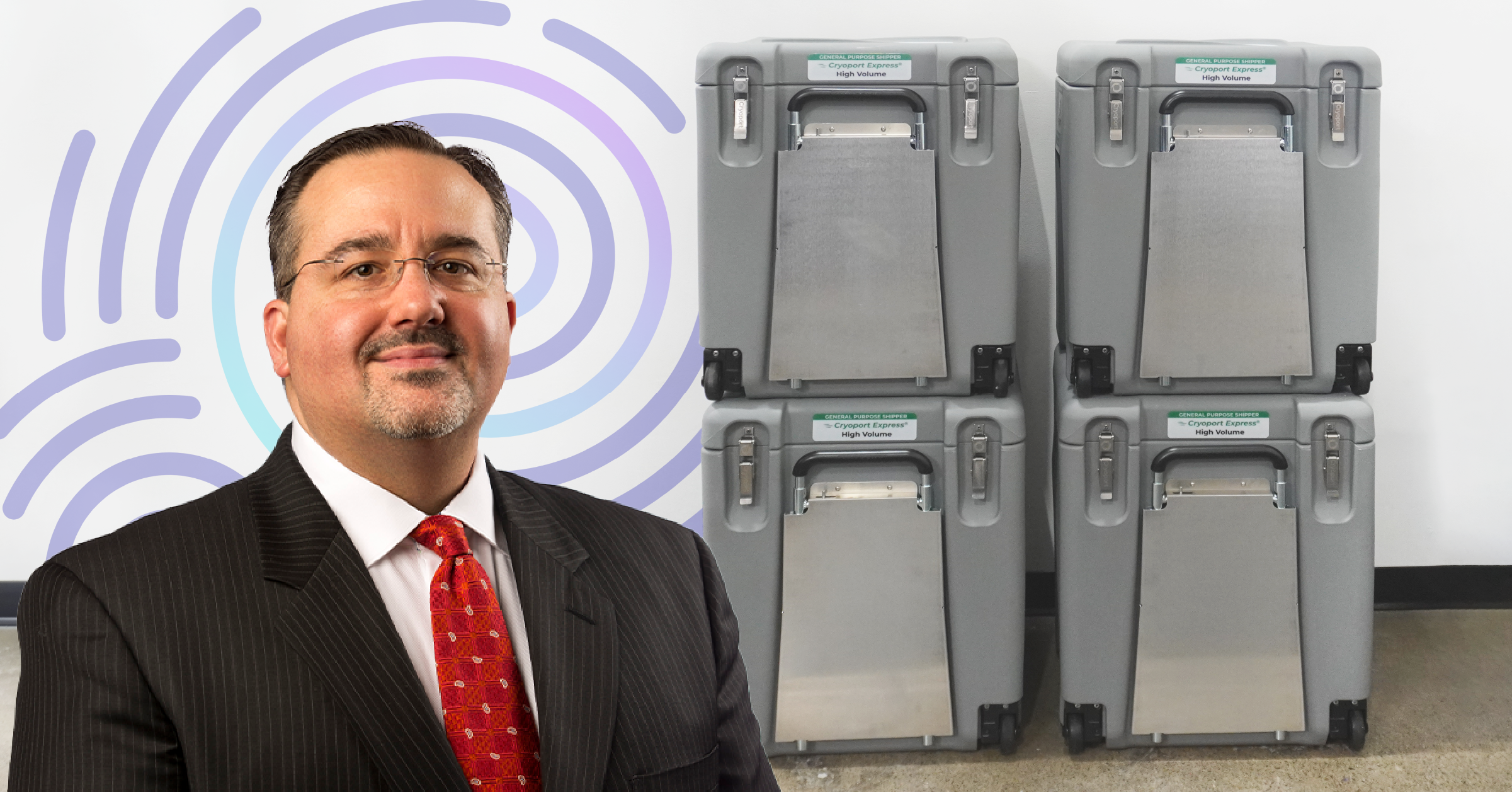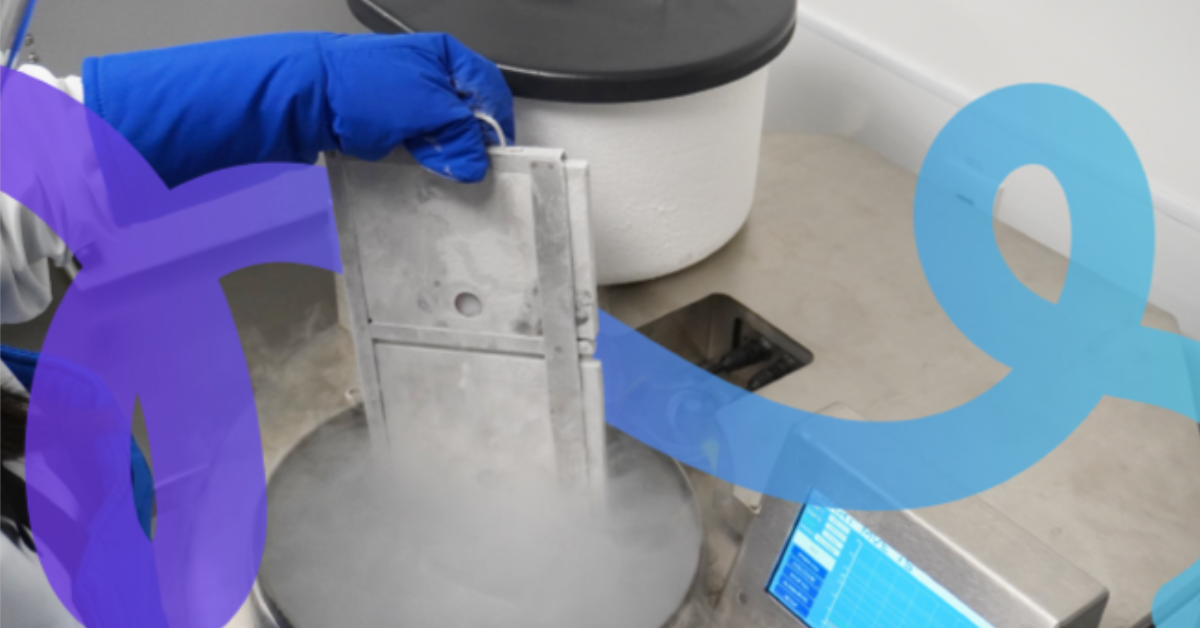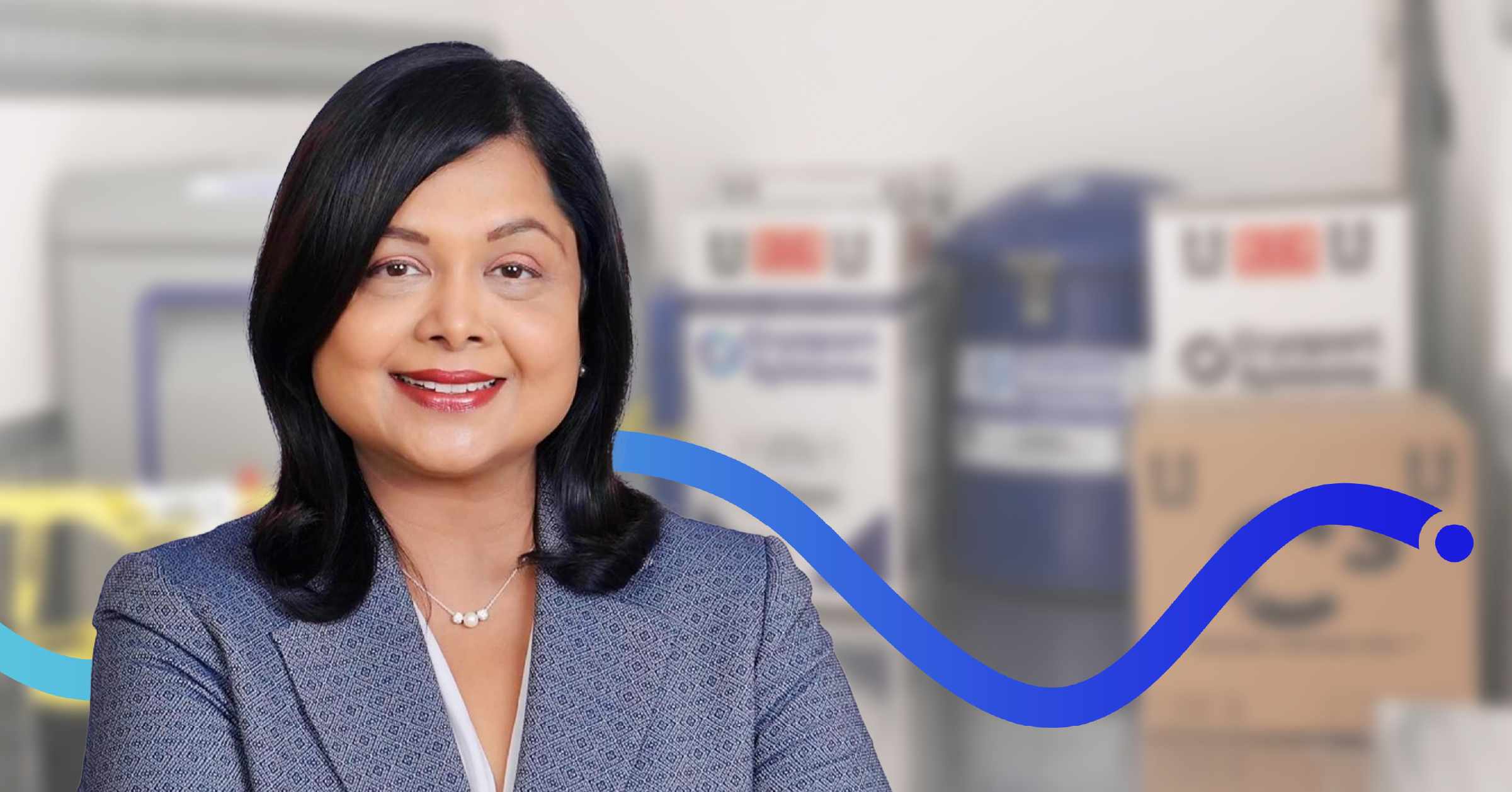
What’s Next for the CGT Industry? Mid-Year Check-In from the Leadership Team
We’re halfway through 2025, and the cell and gene therapy (CGT) landscape stands at a crossroads. Innovation continues to advance, yet the infrastructure required to support commercialization remains under pressure. To assess the current state of the industry and what’s ahead, Cryoport Systems gathered candid insights from our internal leaders across functions, from product development and commercial strategy to operations and client engagement.
Their collective perspective reveals a CGT landscape that is shifting strategically, operationally, and even geographically. While challenges persist, especially around funding, the growing complexity of the regulatory environment, and rapidly changing geopolitical headwinds, opportunities abound for companies that adapt quickly, partner smartly, and prioritize execution.
Here’s what our leadership team had to say.
The Current State of CGT: A Pivotal Year for Execution
Despite macroeconomic pressures, many CGT sponsors remain focused on progress. “The science continues to outpace the infrastructure around it,” says Mark Sawicki, Chief Executive Officer of Cryoport Systems. “That’s the tension we’re seeing across the board, where breakthrough therapies are pushing forward while the ecosystem scrambles to catch up.”
Thomas Heinzen, VP of Corporate Development and Investor Relations, points to the mixed year he’s seen so far. “Some of our customers with commercial therapies are seeing a nice growth in their revenue, while others are struggling to gain traction,” he highlights.
Phil Wilson, Chief Operating Officer, agrees that momentum is returning, albeit more slowly than many hoped. “The pipeline is still promising but slow in progressing,” he points out. “Approvals are picking up, but the impact of recent changes at the FDA has many companies taking a wait-and-see approach.”
Alison Pritchard, VP of Business Development, EMEA, offers a global view. “There’s a shift toward risk management, infrastructure maturity, and commercial scalability,” she highlights. “It’s no longer just about scientific feasibility. It’s about reproducibility across markets and how logistics, quality systems, and regulatory pathways can support global expansion.”
And according to Khoa Tran, Senior Director of Product Development, the U.S. political climate is creating additional uncertainty. “The possibility of therapies staying in clinical stages longer could hinder their progression to commercialization. That could slow the overall trajectory of the CGT space,” he notes.
Funding Pressures are Reshaping Innovation and Partner Strategy
Across the board, leaders pointed to the challenging funding environment as a defining factor of 2025. “Capital constraints are forcing early-stage companies to focus sharply on execution,” says Sawicki. “Innovation hasn’t slowed, but there’s far less appetite for risk without a clear path to value.”
Aruna Mor, Chief Commercial Officer, agrees. “There’s increased pressure on internal teams to do more with less,” she points out. “That includes evaluating every vendor not just by price, but by how well they reduce internal burden.”
That means the partner landscape is evolving. “We’re seeing a shift from transactional vendor relationships to more strategic collaborations,” Mor adds. “Clients are leaning into partnerships where they can offload complexity, gain regulatory confidence, and scale without carrying the full operational overhead.”
Matthew Frazzetta, Vice President of Global Accounts, BioServices, agrees. “Clients are being asked to push on all costs,” he notes. “Our single-vendor value proposition, when presented holistically, is extremely well received. But we need to get in front of more decision-makers to show how everything connects.”
“We are seeing this shift first-hand,” Frazzetta explains, “as clients increasingly expand their scope with us from standalone cryogenic logistics to include integrated services like cryopreservation, biostorage, packaging, labeling, and regulatory services, enabling them to accelerate protocol approvals and reduce time to first patient while streamlining to a single-vendor supply chain management model.”
Commercial Models and Client Expectations are Maturing
As the market recalibrates, expectations are changing. According to Wilson, “We’re seeing other opportunities from existing clients who are looking for broader, more encompassing service offerings. Companies want to consolidate providers and streamline operations.”
Sawicki notes the same, saying, “The overall pacing of the outsourcing shift has been faster than anticipated. Sponsors are walking away from the ‘vendor as a commodity’ mindset and embracing true partnership models, even in functions like logistics, biostorage, and cryopreservation.”
That evolution is evident in how biopharma clients engage with Cryoport Systems, Mor notes. “Clients used to come to us for logistics. Now they’re asking about regulatory consulting, shipping lane qualifications, temperature band flexibility, and risk mapping. They’re looking for help with importer and exporter of record services and short term biostorage supporting clinical materials. They really want one provider who can support them from clinical to commercial scale.”
The needs of early-stage biotechs differ significantly from those of late-phase or commercial-stage programs, Pritchard emphasizes. “While emerging sponsors may require flexible, modular solutions and support for regulatory filings, commercial-stage companies prioritize scale, global redundancy, and cost optimization,” she adds. “Cryoport Systems is aligning its offerings to meet both, through targeted consulting and advisory services, scalable infrastructure that scales alongside program progress, and bundled services that deliver exactly what you need at every phase.”
Operational Integration is the New Imperative
Across supply chain services, leaders are aligned on one point: fragmentation is the industry’s Achilles’ heel.
“Fragmentation remains the root cause of many avoidable issues,” says Sawicki. “The more complex the supply chain, the more fragile it becomes. That’s why single-vendor integration is so critical.”
Wilson echoes that urgency, saying, “Using high-value pharma space for storage just doesn’t make economic sense anymore. The trend toward outsourcing will continue, and so will pricing pressure and the drive for operational efficiencies.”
Through the BioServices lens, Frazzetta sees a split: “In early phases, some clients can do more in-house. But as they move toward late-phase and commercial stages, outsourcing becomes a strategic advantage. The key is laying the groundwork early enough to move quickly as clinical programs progress.”
Pritchard points out the strategic role Cryoport Systems plays in that transition, saying, “Our infrastructure is built for scale, but we’re agile enough to plug in where clients need us most. Whether it’s cryopreservation standardization or custom kit building, it’s about delivering measurable value at each stage.”
Global Forces are Reshaping Strategy and Risk
Tariffs, regulatory changes, and geopolitical shifts are all impacting operations. “Geopolitical uncertainty is putting pressure on supply chain continuity and regulatory alignment,” says Sawicki. “For our clients, de-risking through network design will mean rethinking how they structure their global supply chains, including where they manufacture, store, and distribute critical materials to reduce exposure and maintain compliance across regions. This will be a strategic priority in the back half of the year.”
Wilson shares a similar view, noting that “the U.S. vs. rest-of-world tariff landscape has been disruptive to the biopharmaceutical industry as a whole. I do think we’ll see stabilization in Q3 and Q4, which should help accelerate activity.”
“The relatively lower tariffs between the U.S. and U.K. could shift more trials into that region,” Frazzetta adds. “We haven’t seen the full effect yet, but I expect increased volume there.”
Pritchard echoes this sentiment, saying, “We’re seeing some regulatory bodies reframe their approaches to Advanced Therapeutic Medicinal Products (ATMPs), which could create new pathways for developers to initiate or expand clinical development in new regions. As we move into the second half of the year, I think the most successful organisations will be those that view these changes as an opportunity to build more agile operations.”
Technology, Data, and the Promise of AI
Every leader agrees that better data integration is essential. “AI can’t be ignored,” points out Heinzen, “so it must be embraced… and quickly.”
“You can’t optimize what you can’t measure,” says Sawicki. “And you can’t measure what you can’t access. That’s why we’re investing in platforms that unify data across the supply chain, from patient collection of starting materials to therapeutic delivery.”
Mor adds, “The biggest challenge I see is that the data environment in CGT is still too fragmented to fully leverage AI. There’s no shortage of tools or platforms, but what’s missing is integration across the supply chain. You have disjointed systems made even more complex by the need to track, trace, and continuously monitor the movement and condition of materials through every step in the process. We need to connect those dots.”
Frazzetta sees immediate potential, pointing out, “Clients are hungry for innovation. They want dashboards showing success rates, payload models, and logistics design powered by AI. And they want systems integration that removes manual steps.”
But innovation must be balanced by compliance, Pritchard notes. “We need industry-wide collaboration and alignment to build and validate tools, as well as to establish regulatory pathways for their use.”
Sawicki sees this compliance as a differentiator for the companies that do this well, saying, “The leaders who succeed will treat compliance as a strategic capability, not a constraint. AI tools must be built with regulatory insight, not in isolation.”
Adapting Internally to Stay Ahead
At Cryoport Systems, this year’s priorities have mirrored the market’s demands for more integration, earlier engagement, and clearer client value.
“We’ve deepened our service integration and made strategic investments in infrastructure and early-phase consulting,” says Sawicki. “Execution begins long before the first shipment.”
According to Mor, internal collaboration has been critical. “We’ve worked hard to bring commercial, operational, and client success teams together around unified objectives,” she notes. “We want our clients to experience us as one team with a shared goal, not a collection of departments.”
Tran emphasizes the importance of client proximity: “Getting product teams out to client sites has helped us better understand real-world challenges. That insight is shaping our innovation roadmap.”
Pritchard agrees, noting that many of the internal changes Cryoport Systems has implemented this year are based on direct client and site feedback. “For example,” she points out, “we recently upgraded our high-volume shipper, designing the new Cryoport Express® HV3 Cryogenic Shipping System to better support in-field operations. The new shipper offers enhanced payload protection, easier handling for clinical staff, and a design that aligns with site-level workflow, making it more user-friendly while maximizing performance.”
Looking Ahead, What Will Define the Winners?
As the second half of 2025 unfolds, Cryoport Systems’ leaders are clear about what will separate those who thrive from those who fall behind:
- Integration: “Companies that invest in cohesive, end-to-end supply chain systems now will avoid the growing pains of scaling with a fragmented model,” says Sawicki.
- Execution: “Complexity is accelerating. Execution will quickly become a strategic differentiator,” Mor emphasizes.
- Data Integrity: “Trial design and accurate data are more important than ever,” Heinzen points out. “Partnerships that support and integrate data are important now and will be even more important as AI enters the picture.”
- Trust and Transparency: “The best partnerships are built on visibility and shared planning,” says Wilson. “Bring your partners into the strategy early.”
- Innovation with Purpose: “Innovation isn’t about shiny tools,” says Pritchard, “it’s about solving problems that matter, like cryopreservation standardization and scalable BioServices.”
Or as Tran sums it up, “The strong programs and resilient companies will survive. The rest need to reassess.”
Final Thoughts
As we reach the mid-point of 2025, the CGT industry is at an inflection point. Innovation continues at a remarkable pace, but the path from discovery to delivery is becoming more complex, not less. The era of early enthusiasm has evolved into a phase that demands executional excellence and real-world scalability. For CGT developers, this means that beyond managing pipelines, there’s a very real need to build the infrastructure, partnerships, and decision-making frameworks that will determine whether therapies will succeed not just in the lab, but in the market and in patients’ lives.
From the perspectives shared across Cryoport Systems, it’s clear that the companies that will thrive are those willing to challenge the status quo, whether that means consolidating fragmented vendor networks, investing in resilient supply chain infrastructure, or embracing partnerships that offer more than point solutions. As Pritchard notes, “The best strategic value comes from relationships that deepen as complexity grows.” And as Mor emphasizes, “The ability to stay flexible and adaptable to clients’ evolving needs is no longer a differentiator, it’s a necessity.”
At Cryoport Systems, we believe the future belongs to those who build for it today. By leading with insight and delivering with consistency, we help our clients do more than navigate the challenges ahead; we help them turn those challenges into catalysts for progress. The second half of 2025 is a chance to course-correct, level up, and lead.
As the landscape continues to shift, we encourage biopharma leaders to engage early, challenge assumptions, and think holistically about their end-to-end supply chain strategy. Cryoport Systems is ready to support at every step.
Our sincere thanks to Mark Sawicki, Aruna Mor, Phil Wilson, Thomas Heinzen, Matthew Frazzetta, Alison Pritchard, and Khoa Tran for sharing their time and insights.


